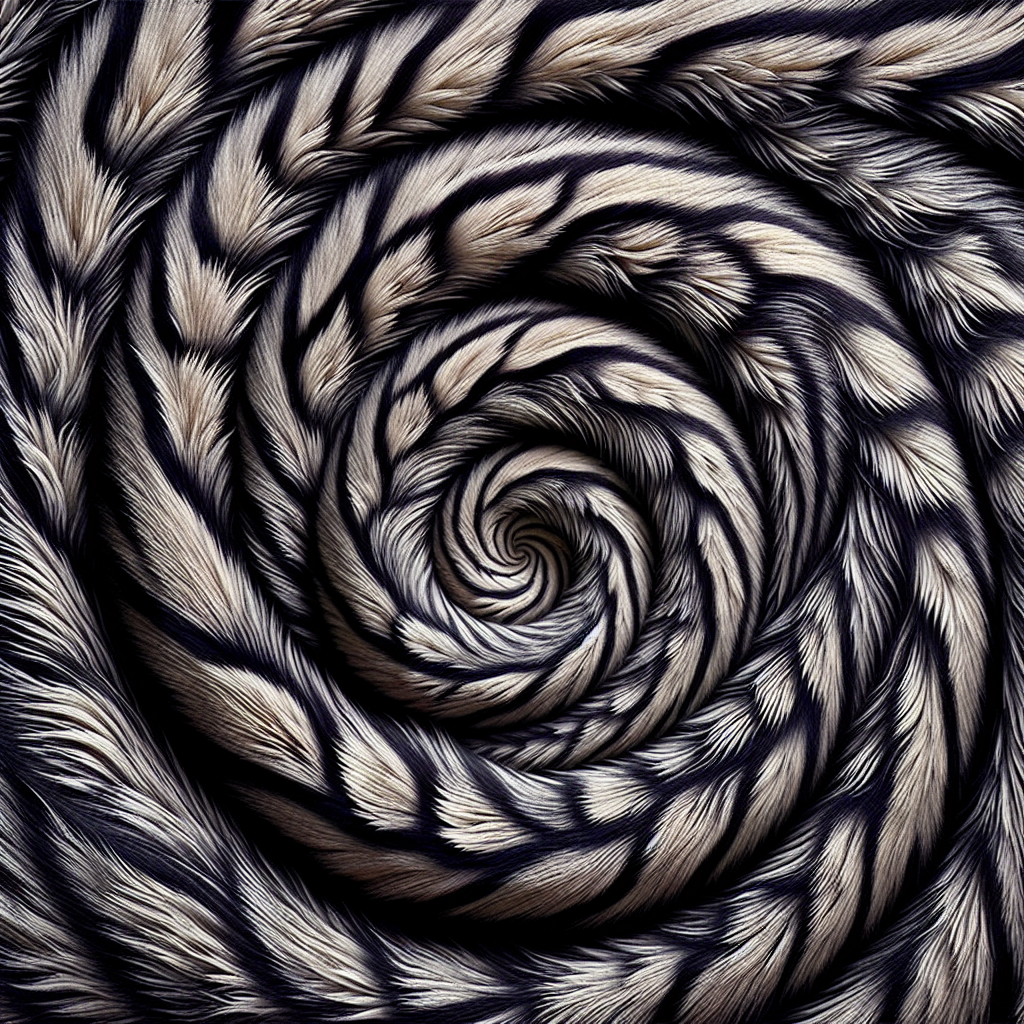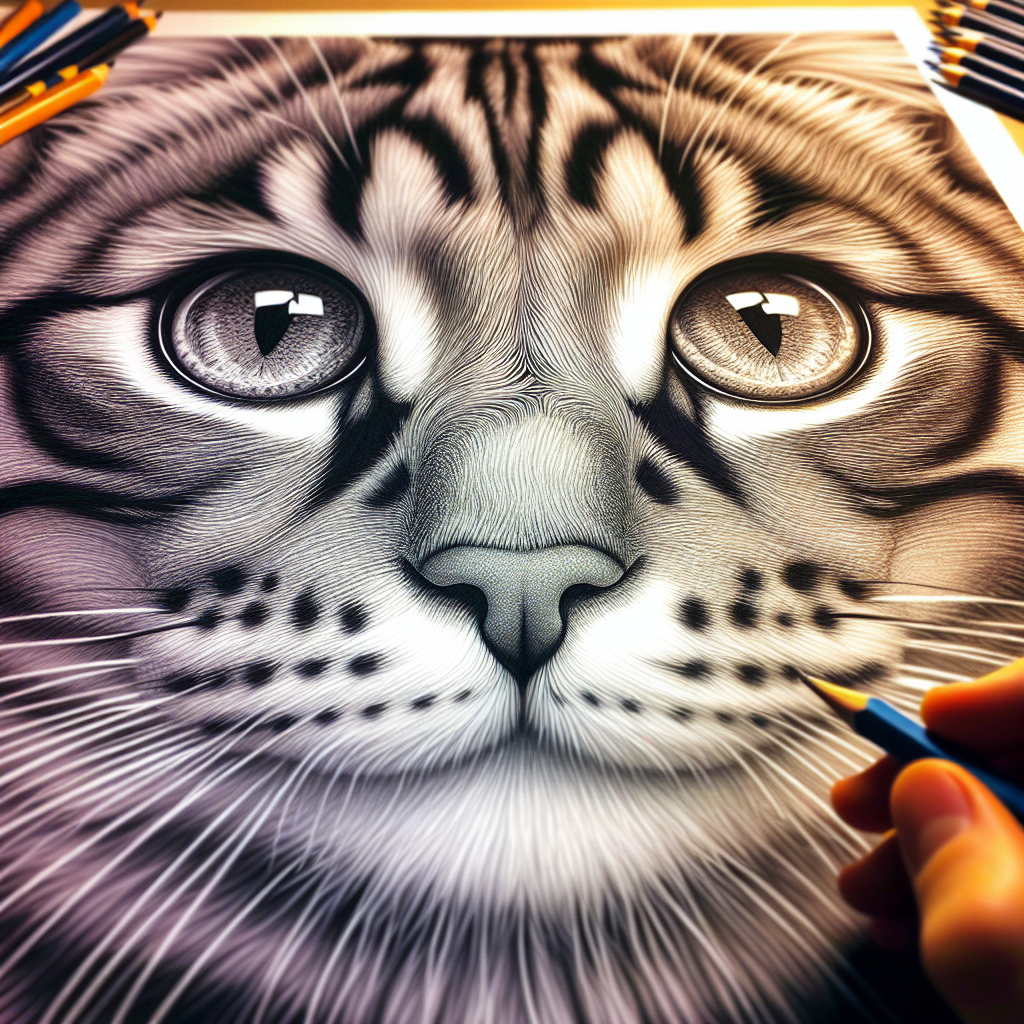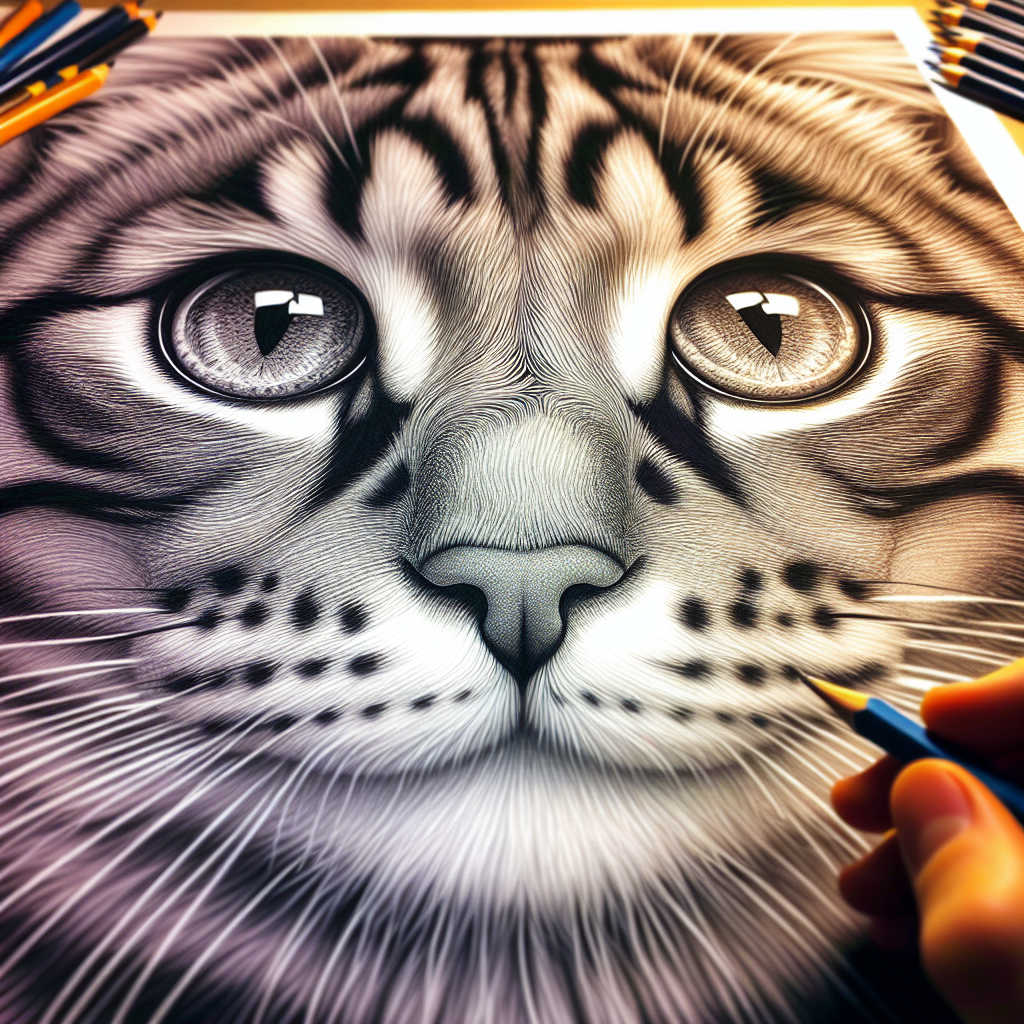When it comes to cats, there’s one breed that stands out from the rest – the tabby cat. With their distinctive coat patterns and captivating personalities, tabby cats are truly one-of-a-kind. As you explore the world of these fascinating felines, you’ll soon discover what makes them so unique. From their ancient lineage to their diverse coat variations, the tabby cat is a treasure trove of intriguing traits. So, let’s unravel the mystery and unravel what makes a tabby cat truly special!
Physical Appearance
Coat patterns and colors
Tabby cats are known for their beautiful coat patterns and colors. The most common tabby pattern is the classic “M” marking on their foreheads. Other patterns include the mackerel, spotted, ticked, and patched. These patterns can appear in a variety of colors, such as brown, gray, orange, and cream. Each tabby cat has a unique pattern and color combination, making them visually distinctive and attractive.
Distinctive markings
In addition to their coat patterns, tabby cats often have distinctive markings on their bodies. These markings can include stripes, swirls, and spots. Some tabbies have a “bullseye” pattern on their sides, while others have a striped tail or legs. These markings add to the individuality of each tabby cat and enhance their overall charm.
Body structure
Tabby cats typically have a medium-sized body with well-defined muscles. They have a sleek and elegant physique, which allows them to move gracefully. Their heads are usually round or slightly triangular, with bright and expressive eyes. Tabby cats have a strong and agile build, making them excellent hunters and climbers. Overall, their physical appearance showcases a perfect balance of grace and strength.
Temperament
Playful and active
One of the defining characteristics of tabby cats is their playful and active nature. They have high energy levels and enjoy interactive games and toys. Tabby cats love to chase, pounce, and explore their surroundings. Engaging in regular play sessions helps fulfill their natural instincts and keeps them entertained.
Sociable and friendly
Tabby cats are known for their sociable and friendly disposition. They thrive in the company of their human companions and enjoy being a part of the family. They are often eager to greet visitors and make new friends. Tabby cats are excellent companions and thrive in environments where they receive ample love, attention, and social interaction.
Intelligent and curious
Tabby cats are intelligent and curious by nature. They have a keen sense of observation and like to explore their surroundings. They enjoy interactive toys and puzzles that challenge their minds. Tabby cats are quick learners and can often be taught tricks or basic commands. Their curiosity and intelligence make them engaging and entertaining companions.

History
Origins of tabby cats
The origins of tabby cats trace back to ancient Egypt, where they were highly regarded and even worshipped. Ancient Egyptian art depicts cats with tabby-like markings, suggesting that the tabby pattern has been present for centuries. Over time, tabby cats spread across various parts of the world, becoming a common and beloved feline companion.
Evolution and domestication
Tabby cats, like all domestic cats, evolved from their wild ancestors. They are believed to have descended from the African wildcat, Felis lybica. Through centuries of domestication, tabby cats have adapted to living alongside humans and have developed unique traits and characteristics.
Popularity as pets
Tabby cats have gained immense popularity as pets due to their charming personality and distinctive appearance. Their friendly and sociable nature makes them excellent companions for families and individuals alike. Tabby cats often form deep bonds with their owners, adding an extra layer of joy to their lives. Their widespread popularity as pets reflects their ability to bring happiness and love to any household.
Grooming Needs
Coat care requirements
Tabby cats have relatively low grooming needs compared to some other cat breeds. Their short to medium-length coats require regular brushing to remove loose hair and to prevent matting. A soft-bristle brush is ideal for their coat, as it helps maintain their fur’s natural shine. Regular grooming also provides an opportunity to bond with your tabby cat and keep their coat in optimal condition.
Bathing and brushing
While tabby cats generally groom themselves efficiently, occasional baths may be necessary, especially if they get dirty or have skin issues. It’s important to use cat-friendly shampoo and to make bath time a positive experience for your tabby cat. Additionally, regular brushing helps minimize shedding and promotes a healthy coat.
Nail trimming and dental hygiene
Like all cats, tabby cats require regular nail trims to prevent sharp, uncomfortable claws. This can be done with cat-friendly nail clippers or a scratching post that naturally files their nails. Dental hygiene is also essential for maintaining your tabby cat’s overall health. Regular teeth brushing or the use of dental treats helps prevent dental diseases and keeps their teeth and gums healthy.

Health Considerations
Common genetic conditions
While tabby cats are generally healthy, they can be prone to certain genetic conditions. Some tabbies may be susceptible to hypertrophic cardiomyopathy (HCM), a heart disease that affects the heart muscles. Regular veterinary check-ups, including cardiac screenings, can help monitor their heart health and detect any potential issues early on. Other genetic conditions that may occur in tabby cats include polycystic kidney disease (PKD) and hip dysplasia.
Diet and obesity
Maintaining a balanced diet and healthy weight is crucial for the overall well-being of tabby cats. Obesity can lead to various health issues, such as diabetes and joint problems. Feeding them a high-quality, portion-controlled diet that is appropriate for their age and activity level helps prevent obesity and supports their optimal health.
Regular veterinary check-ups
Regular veterinary check-ups are essential for ensuring the long-term health of tabby cats. Routine vaccinations, deworming, and preventive treatments for fleas and ticks are necessary to protect them from common diseases and parasites. Additionally, regular check-ups allow veterinarians to detect any health concerns early on and provide appropriate treatment.
Interaction with Humans
Suitability as family pets
Tabby cats are highly suitable as family pets due to their friendly and sociable nature. They thrive in environments where they receive love, affection, and attention from their human family members. Tabby cats often form strong bonds with their owners and enjoy being a part of family activities. They bring joy, companionship, and laughter to households, making them cherished members of the family.
Compatibility with children and other pets
Tabby cats generally get along well with children and other pets when properly socialized. They are patient and tolerant, making them ideal companions for families with young children. However, it is essential to introduce tabby cats to children and other pets gradually and supervise interactions to ensure everyone’s safety and wellbeing.
Affectionate and loyal nature
Tabby cats are known for their affectionate and loyal nature. They enjoy being in the presence of their human companions and are often found snuggling up for cuddles. Tabby cats are quick to show their love and loyalty, making them perfect companions for those seeking constant affection and companionship.
Vocalization
Types of vocalizations
Tabby cats, like other cats, have a range of vocalizations to communicate their needs and emotions. These vocalizations can include meowing, chirping, purring, and even trilling. Each vocalization serves a different purpose and can convey a variety of messages.
Meanings of different sounds
Meowing is the most common vocalization made by tabby cats and can indicate various needs, such as hunger, attention, or a desire to go outside. Purring often signifies contentment, relaxation, or a desire for human interaction. Chirping is a unique vocalization often heard when tabby cats are excited or observing prey. Trilling is a high-pitched sound that tabby cats use to seek attention or express happiness.
Communicative behaviors
In addition to vocalizations, tabby cats use various body language cues to communicate with their human companions. These behaviors can include rubbing against legs to mark territory, tail flicking to show excitement or agitation, and kneading with their paws to exhibit contentment or a sense of comfort. Understanding these communicative behaviors helps strengthen the bond between tabby cats and their owners.
Behavioral Traits
Hunting instincts
Tabby cats retain strong hunting instincts inherited from their wild ancestors. They may exhibit behaviors such as stalking, pouncing, and playing with small toys or objects. Providing interactive toys and engaging in play sessions that stimulate their hunting instincts helps keep them mentally and physically satisfied.
Marking territory
Tabby cats have a natural instinct to mark their territory. This can include rubbing against furniture, walls, or even their human companions. Marking territory through scent helps tabby cats feel secure and establish their presence in their environment. It is essential to provide appropriate scratching posts and provide positive reinforcement for desired behavior to redirect their marking instincts.
Purring and kneading
Purring and kneading are common behaviors exhibited by tabby cats. Purring is a soothing sound that typically signifies contentment and relaxation. Kneading, also known as “making biscuits,” is the rhythmic motion of pushing their paws in and out against a soft surface. This behavior is often associated with happiness, comfort, and an instinctual behavior from kittenhood when they kneaded their mother’s belly to stimulate milk flow.
Playfulness
Favorite toys and games
Tabby cats are playful creatures that enjoy a variety of toys and games. Some of their favorite toys include interactive puzzle toys, feather wands, laser pointers, and crinkly balls. These toys allow tabby cats to engage their hunting instincts and provide mental stimulation and exercise.
Interactive activities
In addition to traditional toys, tabby cats enjoy interactive activities with their human companions. This can include hide-and-seek games, treat puzzles, and clicker training sessions. Interactive activities promote bonding, stimulate their minds, and provide avenues for physical exercise.
Exercise requirements
Tabby cats benefit from regular exercise to maintain their physical and mental well-being. Engaging in play sessions and providing opportunities for climbing, jumping, and exploration enriches their environment and prevents boredom. Providing scratching posts, cat trees, and interactive toys helps satisfy their natural instincts and keeps them physically fit.
Famous Tabby Cats
Well-known tabby cats in popular culture
Tabby cats have made appearances in various forms of popular culture. One of the most famous tabbies is Garfield, the beloved orange tabby from the comic strips and animated series. Garfield’s witty and mischievous personality has captured the hearts of millions around the world. Other well-known tabbies include Oliver from Disney’s “Oliver & Company” and Salem from the TV series “Sabrina the Teenage Witch.”
Feline celebrities
Tabby cats have also gained celebrity status in their own right. Tardar Sauce, better known as Grumpy Cat, became an internet sensation due to her perpetually grumpy facial expression. Her unique appearance and online fame garnered millions of followers and even led to merchandise and media appearances. Grumpy Cat’s trademark scowl made her an iconic tabby cat.
Historical figures and their tabby companions
Throughout history, many famous individuals have had tabby cats as beloved companions. One such example is Ernest Hemingway, who had a polydactyl (many-toed) tabby cat named Snowball. Hemingway was known for his love of cats and had many furry friends throughout his life. The bond between these famous individuals and their tabby companions shows the special connection that tabby cats can form with their owners.
In conclusion, tabby cats possess a unique combination of physical attributes and personality traits that make them truly special. From their distinctive coat patterns and colors to their playful and sociable nature, tabby cats make excellent companions for individuals and families alike. Their intelligence, loyalty, and affectionate demeanor add joy and love to any household. Whether they are playfully chasing toys or snuggled up by your side, tabby cats bring happiness and companionship that is unmatched. Cherish the uniqueness of your tabby cat and enjoy the wonderful bond that you share.

